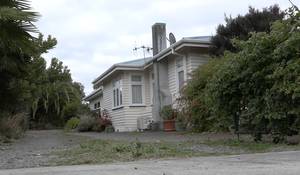情報元:RNZ NEWS
アジア系ニュージーランド人の間で、Covid-19(新型コロナウイルス)に起因する差別や人種差別の経験が多いことが、調査で明らかになりました。
この調査を率いたマッセー大学のSally Liu上級講師によると、昨年の回答者402人のうち、4分の1弱(22.7%)が、Covid-19を理由に差別を受けたことがあると発言したとのことです。
3分の1近く(32.4%)は、自分の社会的集団の他の人が人種差別や不平等な扱いを経験したと答え、半数近く(45.8%)は、自分の社会的な輪を超えて、人種差別やスティグマに気づいていると報告しました。
回答者はそもそも14以上のアジアの国や地域から集まっていますが、特に中国人の回答者が差別されている感覚を訴えたと、Liu博士は述べています。
「これは、世界的に病気が広がる中で、中国人や中国人に見える人々が、他国が(中国武漢発祥の)ウイルスを抑制できなかったことのスケープゴートとなった、という背景がありました。」
人種差別に対する短期的な解決策はないものの、政府はもっと意識を高める必要がある、とLiu博士は言います。
パンデミックが起こった場合、特定の民族を非難することが役に立つのでしょうか?そんなことはありません。パンデミックや感染力のあるウイルスは、政治や民族の問題ではなく、医学的な問題なのです。」と。
「このような社会意識は、長期的な視点と教育制度を通じて培われる必要があります。」
また、約82%(の回答者)がCovid-19を死に至る病気と評価し、80%がパンデミック開始時に国境の管理を強化することを望み、70%が義務化される前から進んで屋外でのマスクの着用をしていました。
Covid-19の蔓延を防ぐために、当局からの健康勧告に従ったと答えた人の割合は、93.3%と高かったとLiu博士は述べています。
「れらの問題に焦点を当てた理由は、Covid-19のパンデミックは、単なる公衆衛生上の危機ではなく、文化的認識、医学的言説、人種関係、地域・国際保健ガバナンスといった異なる、交差する領域にも情報を与えることができると考えるからです。」
全体の誤差は、95%の信頼度でプラスマイナス4%です。
今年初め、人権委員会は、パンデミックの初期に100件以上の問い合わせを受け、アジア・中国系コミュニティの人々に対する暴言、人種的嫌がらせ、差別を理由として、同様の調査を発表しています。






























































